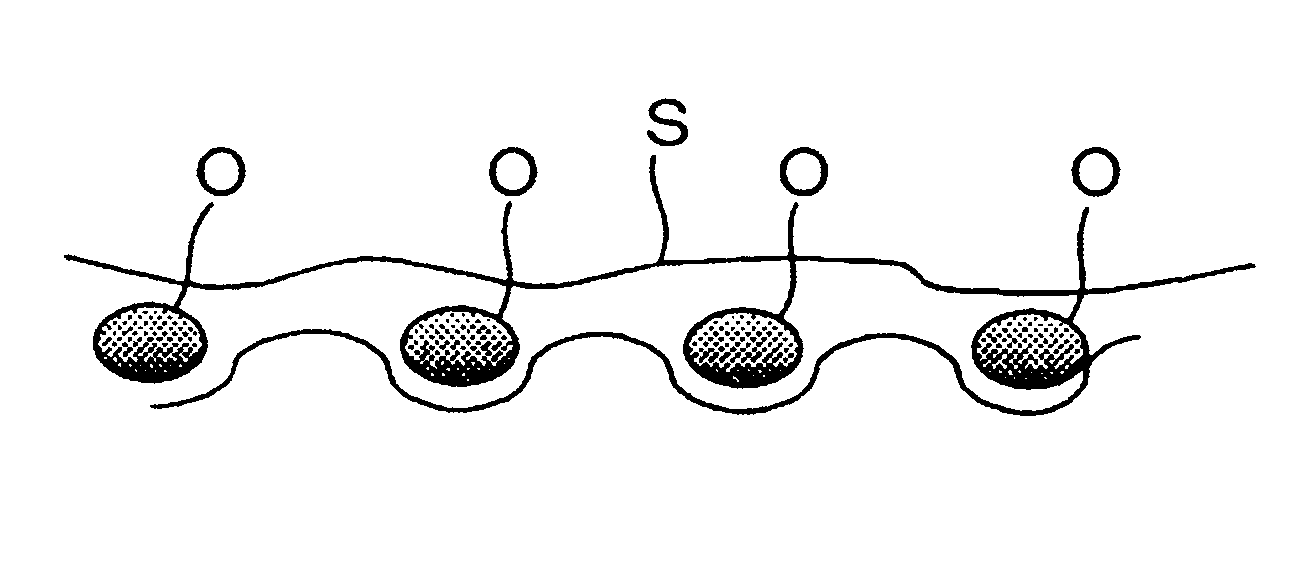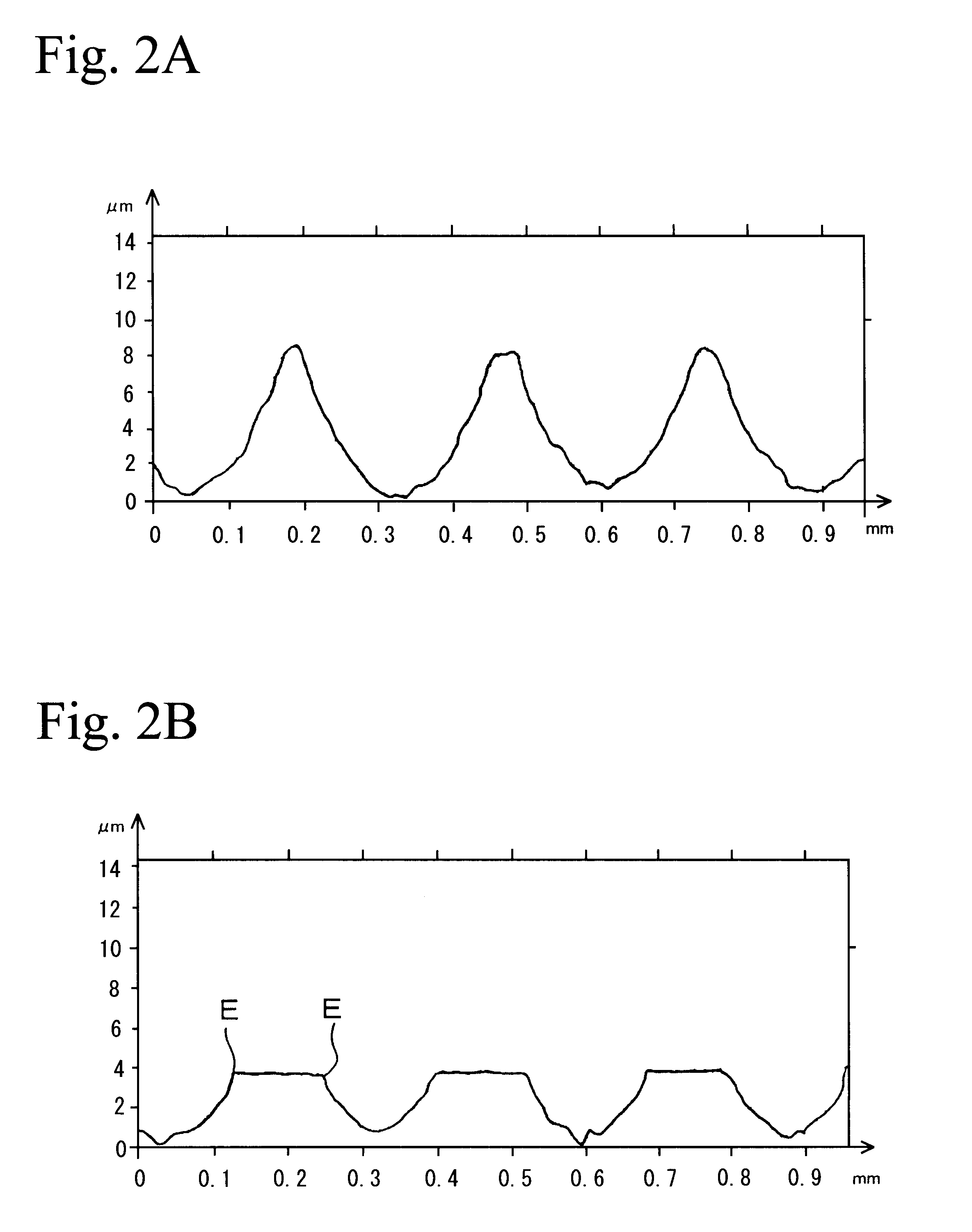Sliding members and piston for internal combustion engine
a technology of internal combustion engine and sliding member, which is applied in the direction of engine lubrication, cylinders, pressure lubrication, etc., can solve the problems of increasing fuel consumption, coating flakes off or wear, and cannot yield substantial reduction of sliding resistance, so as to achieve the effect of suppressing noise and vibration, narrow clearance between the skirt portion and the sleeve, and effectively avoiding unusual nois
- Summary
- Abstract
- Description
- Claims
- Application Information
AI Technical Summary
Benefits of technology
Problems solved by technology
Method used
Image
Examples
Embodiment Construction
A. Production of Samples
Pistons having a typical shape and a size were produced. Protrusions (streaks) having a cross section shown in FIG. 6A were formed around the outer circumference of the pistons. The distance between the protrusions was about 250 .mu.m, and the height thereof was about 10 .mu.m. The piston was attached to a turntable, and glass beads having an average diameter of 40 .mu.m were projected to the side surface of the piston by compressed air while rotating the piston. Plural samples were produced while the incident pressure was changed to 5.0 kg / cm.sup.2 from 1.5 kg / cm.sup.2.
B. Measurement of Dimple
For evaluation of the average depth of dimples in each sample, surface roughness Ra of the sample was measured, and the Ra was defined as the average depth. The results are shown in FIG. 7. As will be understood from FIG. 7, the depth of the dimple increases as the incident pressure in shot peening processing is increased.
C. Measurement of Friction Loss
Suitable samples ...
PUM
 Login to View More
Login to View More Abstract
Description
Claims
Application Information
 Login to View More
Login to View More - R&D
- Intellectual Property
- Life Sciences
- Materials
- Tech Scout
- Unparalleled Data Quality
- Higher Quality Content
- 60% Fewer Hallucinations
Browse by: Latest US Patents, China's latest patents, Technical Efficacy Thesaurus, Application Domain, Technology Topic, Popular Technical Reports.
© 2025 PatSnap. All rights reserved.Legal|Privacy policy|Modern Slavery Act Transparency Statement|Sitemap|About US| Contact US: help@patsnap.com



